Pleated Shades vs. Cellular Shades: What's the Difference?
7051134169 • January 2, 2025
Comparing Pleated and Cellular Shades and Which is Right for You!
When you look at them straight on, pleated shades and cellular shades look awfully similar. Both types of shades are made from similar materials, operate in much the same way, and offer the same types of light control and light filtration. It isn’t until you look at them from the side that you notice a slight divergence in appearance.
So what’s the difference? And why would you choose one over the other? Don’t worry, we can help! We’re going to dive into what makes cellular and pleated shades unique and the benefits of both.
Cellular Shades
Cellular shades are often referred to as honeycomb shades. This is because of their pocketed or cellular design. This pocketed design has a function and that is to insulate your home. The cells trap hot or cold air that seeps in through your windows, helping keep the temperature inside of your home more regulated. This can cut down on energy costs! In fact, cellular shades are considered the best energy saving window covering. You can opt for multiple layers of cells, and with each layer, you get even more insulation.
When selecting the right cellular shade for you, you’ll want to consider the number of cells, the material, the shape of the cells, and the pleat size. Besides the pocket construction and material, other design features you can opt for include cordless and bottom-down top-up design. You can also add an additional lining to help with room darkening.
Pros of Cellular Shades:
They offer better insulation than other window coverings.
The small stack height means the shades compress tightly when raised, creating a wonderful view through your window!
They offer great privacy, especially with a blackout option.
They come in a wide range of colors.
There’s an optional upgrade to cordless for child safety.
The pleats retain their shape better over time than pleated shades.
The pocketed design also reduces noise for a more restful sleep.
Cons of Cellular Shades:
The fabrics that cellular shades are made of are harder to clean than wood or faux wood blinds.
They are more expensive than pleated shades.
Rooms Cellular Shades Work Best In:
Bedrooms
Living rooms
Dining rooms
Pleated Shades
Pleated shades, often called pleated blinds, do not have slats. From the front, they look like cellular shades, but from the side, you can see that pleated shades only have a single layer of fabric that creates a zig-zag, so there are no pockets to insulate your home like in cellular shades.
But like cellular shades, you can choose material, color, and other upgrades such as cordless and bottom-down top-up design.
Pros of Pleated Shades:
They are less expensive than cellular shades.
The small stack height means the shades compress tightly when raised, giving you a great view through your window!
They come in a wide range of colors.
They let in more light than cellular shades.
There’s an optional upgrade to cordless for child safety.
You can add additional linings for more privacy or room darkening.
Cons of Pleated Shades:
The single layer of fabric means less privacy and many pleated shades can be quite sheer without an additional lining.
The fabrics that pleated shades are made of are harder to clean than wood or faux wood blinds.
They are not as energy efficient as cellular shades.
Rooms Pleated Shades Work Best In:
Living rooms
Dining rooms
Elevate Your View Today!
Ready to buy your new window coverings? Or do you still need help deciding? Either way, the experts at Elevated Views are ready to help! We believe in helping you find the best options for your style, budget, and needs. Schedule your free in-home consultation and quote and we’ll bring the showroom to you!
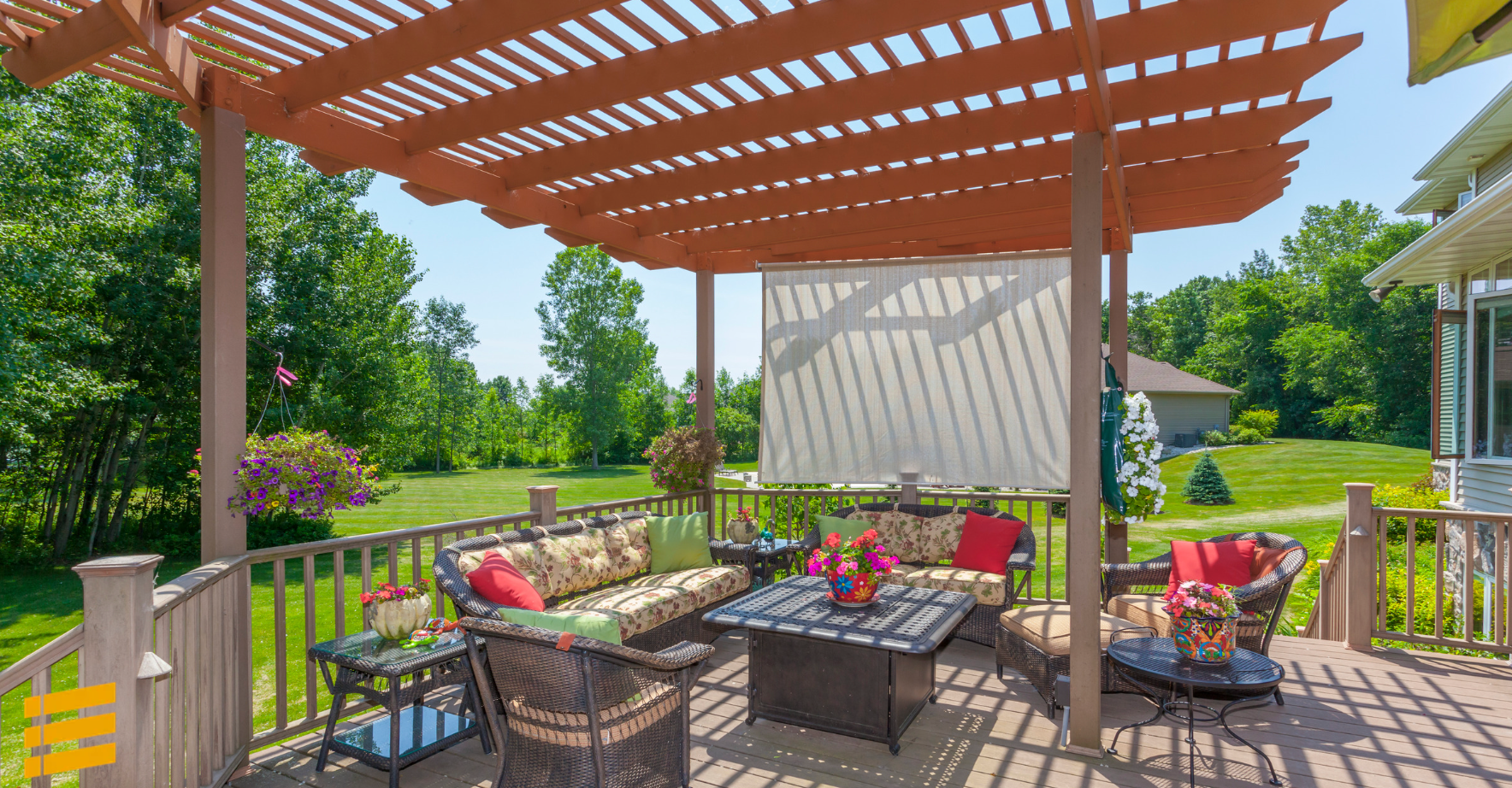
The summer season is starting to heat up and that means it’s time to consider how to keep your home and patio cooler! Patio shades can not only help extend your living space during the warmer months, but it can also provide better temperature regulation inside your home, resulting in energy savings. Here are our top window and patio shades to help you stay cooler this summer. Patio Shades Patio shades are made from solar screen fabric and provide a simple yet elegant solution for shading your patio or porch from the harsh summer sun. These shades roll up into a neat stack when not in use, but when drawn, provide privacy plus protection from glare, heat, and harmful UV rays. This not only helps protect you from the elements, but your patio furniture too, increasing their longevity and protecting your investment. Patio shades have a wide selection for customization, including fabrics, hardware, and finishing options. Exterior Sun Shades Exterior sun shades are like sunglasses for your windows! They are installed on the exterior of your home’s windows and doors to help block heat, glare, and UV rays, keeping your home cooler and your energy bill down. Exterior sun shades are one of the most effective ways to decrease heat gain in your home because they stop the sunlight and heat before it even enters the glass of your windows, blocking up to 97% of heat and UV rays! Simply control the temperature in your home by rolling down these shades when needed, and up when you don’t. Retractable Insect Screens Sun and heat can chase us indoors, but so can insects! Keep your outdoor spaces more comfortable by getting retractable insect screens, which keep out critters and bugs when you want to enjoy your covered patio. These retractable screens roll up and down, allowing you to enjoy the open air at dusk without all the mosquitos or moths! These screens can also be added to movable glass walls and garage door openings. Sail Shades Sail shades or triangle shades are strong pieces of solar fabric that are mounted to your home or poles to shade a patio, play equipment, sandbox, or other spots you want to keep cooler around your yard. Sail shades, just like solar shades, come in a variety of fabrics and sizes to help you get the perfect look. Why Custom is a Better Investment Custom window and patio shades are a much better investment in your home! While their upfront cost may be a bit more than big box store options, custom shades are made of higher quality materials that will better withstand the extreme Colorado weather. Elevated Views is ready to help you create your oasis for this summer! Schedule a free in-home consultation and quote and we’ll bring the showroom to you!
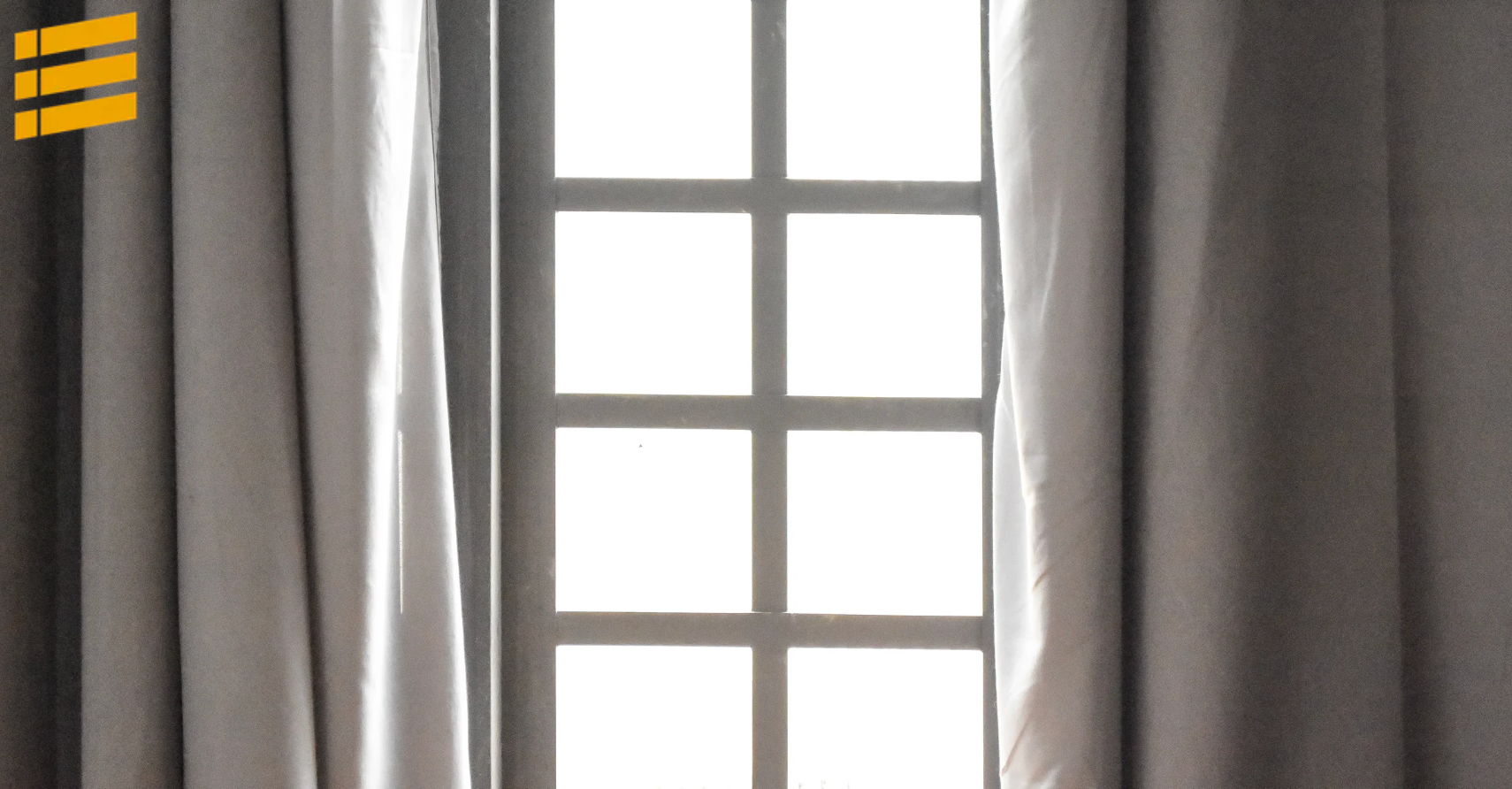
We know times are tight right now, but privacy isn’t a luxury–it’s a necessity! So if it’s time to replace your window treatments, you’ll want to check out our top three favorite affordable window coverings. Why Custom is More Affordable than Big-Box Options A lot of us have a tendency to only consider the short-term cost. When it comes to investing in your home and your privacy, it’s important to actually consider the long-term cost. Big box store options can be really tempting. Blinds are blinds, right? Wrong! Custom window coverings are actually more affordable than big-box options. Here’s why: Custom window treatments are made from high-quality materials and are made to last. Custom window treatments are made to fit your exact window size, meaning you won’t have to worry about someone knocking into your window treatment and damaging it. Because custom window treatments are made to fit your window, they are also more energy efficient, giving you bigger savings on your energy bills! You could buy some big-box store window coverings, but keep in mind that they won’t be made to last and they won’t be made to fit! You’ll just end up purchasing new window treatments five to ten years down the road. Or you could buy quality custom window coverings that actually stand the test of time and are more energy efficient. Our Top 3 Favorite Affordable Window Treatments Now that we have your attention on why custom is more affordable in the long-run, let’s take a look at our top three favorite window treatments. Custom Blinds Blinds are the most loved window treatment around and it’s not hard to see why! They give you full light and privacy control! We offer a variety of custom blinds, including faux and real wood options. We recommend going cordless for a clean look and for homes with pets or small children. Custom Shades Looking for a soft fabric treatment instead? There are a variety of custom shades to fit your style and needs. Choose from a variety of fabrics, textures, patterns, and colors to add a soft touch or a statement look. We recommend adding a solar or blackout lining for additional energy savings. We offer: Cellular shades Solar shades Roller shades Roman shades Pleated shades Sheer shades Natural shades And more! Custom Faux Wood Interior Shutters Now we know what you are thinking, but yes, interior shutters can be affordable! What we love about interior shutters is that they actually add value to your home. They are so desirable by home buyers, that they are willing to pay more for them. That makes interior shutters an incredible investment in your home and future! To keep costs down, opt for faux wood (composite) shutters, which are easier to keep clean too! We’ll Bring the Showroom to You! Ready to update your window coverings to an affordable custom option? Elevated Views offers no-pressure design help because we want you to choose the right window treatment for your style and budget. Schedule a free in-home consultation and quote today and we’ll bring the showroom to you!
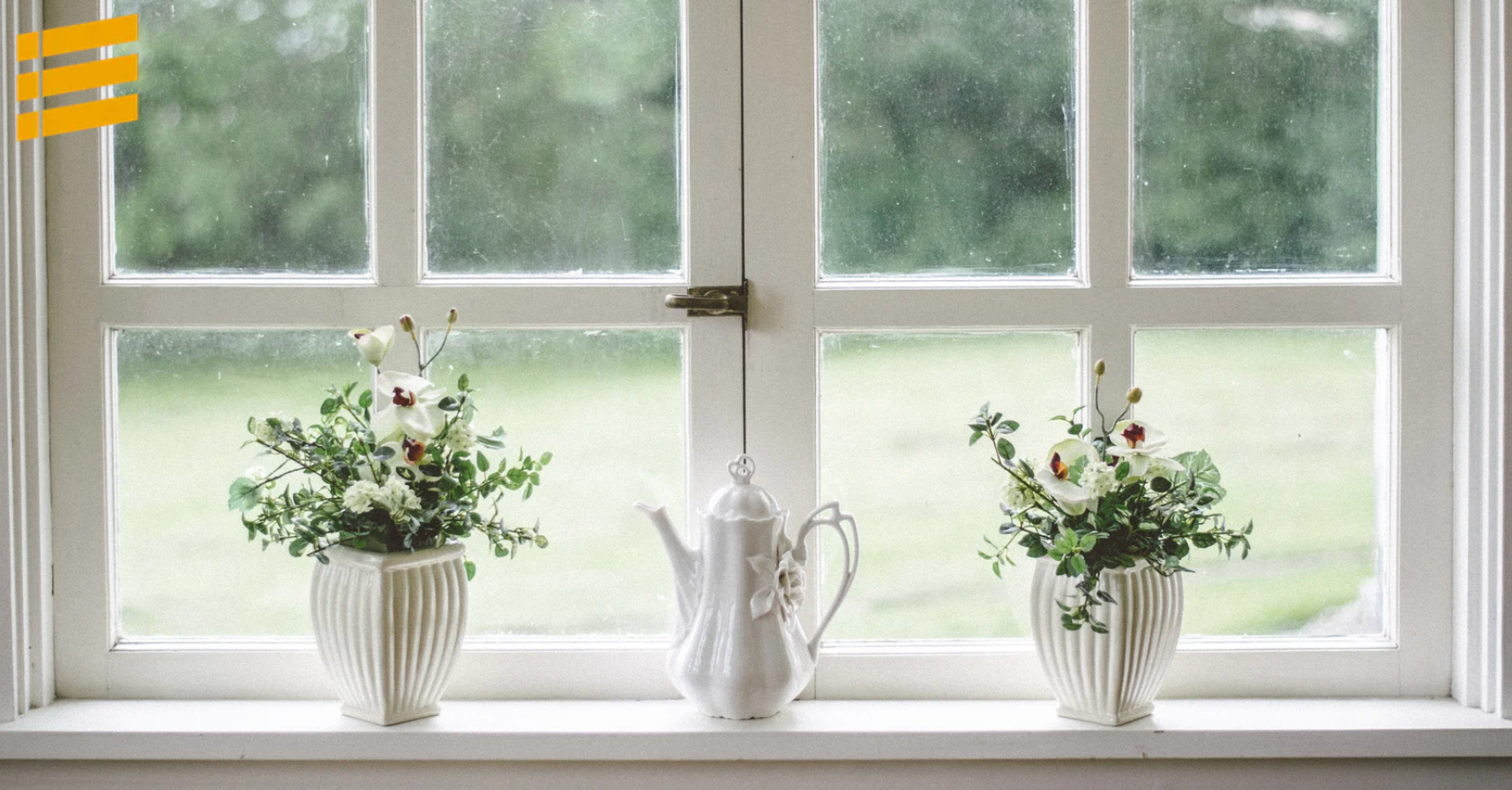
The dog days of summer are just around the corner and we can already feel the heat! And while we can’t all afford to crank up the AC or replace our windows, there are some window treatments you can upgrade to this spring that will bring energy savings and keep you cool and stylish for the summer. Cellular Shades These aren’t your grandmother’s cellular shades! Today’s cellular shades, also known as honeycomb shades, are sleek and stylish. Their pocketed design traps both hot and cold air, keeping your home’s temperature more regulated year round. In fact, cellular shades are the most energy efficient window covering out there, helping you see reduction on both your gas and electricity bills. Cellular shades come in a variety of materials, textures, and colors to match any home decor style. You can also select from one to three layers of pockets; the more layers of cells, the greater your energy savings! We also recommend opting for cordless for a more clean look, or for homes with pets or small children. Interior Shutters Make an investment in your energy bill and your home with stylish interior shutters. Love the look and functionality of blinds but want something a little more energy efficient? Look no further than shutters. Because this window treatment is mounted to your window casing, it minimizes the amount of gaps that hot and cold air can seep through, helping you stay more comfortable year round. Plus, this window treatment is so desirable that home buyers are willing to pay more just to have them in their next home. So while interior shutters are the most expensive option, they are an incredible investment! These traditional window treatments aren’t just for traditional-styled homes. Shutters come in a variety of options that look great in modern and traditional homes. Whether you opt for real wood or faux wood, white or black, you can’t go wrong with interior shutters. Exterior Shades Have what you need for window treatments on the inside of your home? Then consider exterior shades for the outside of your home! Not only do patio shades make your patio more enjoyable during the hot summer months, but it can also provide additional protection for the inside of your home from summer heat and glare. Or try exterior solar window shades, which utilize a European concept by mounting outside your windows and blocking up to 97% of heat and UV rays. Control the temperature by rolling down exterior solar sun shades on hot days and rolling the shade up when you don't need it. There are plenty of options for patio and exterior solar shades for your home to help you create your indoor and outdoor oasis this summer. You can even add on retractable insect screens that help keep the bugs out when you want to spend time on your patio! Work with the Window Covering Leader Elevated Views understands the brutal Colorado seasons. We also believe that the right window covering can literally change your point of view! We are a locally-owned business in the Pikes Peak region, helping Coloradoans just like you make selecting your next window covering simple and fun! Schedule a free in-home consultation and quote and we’ll bring the showroom to you!
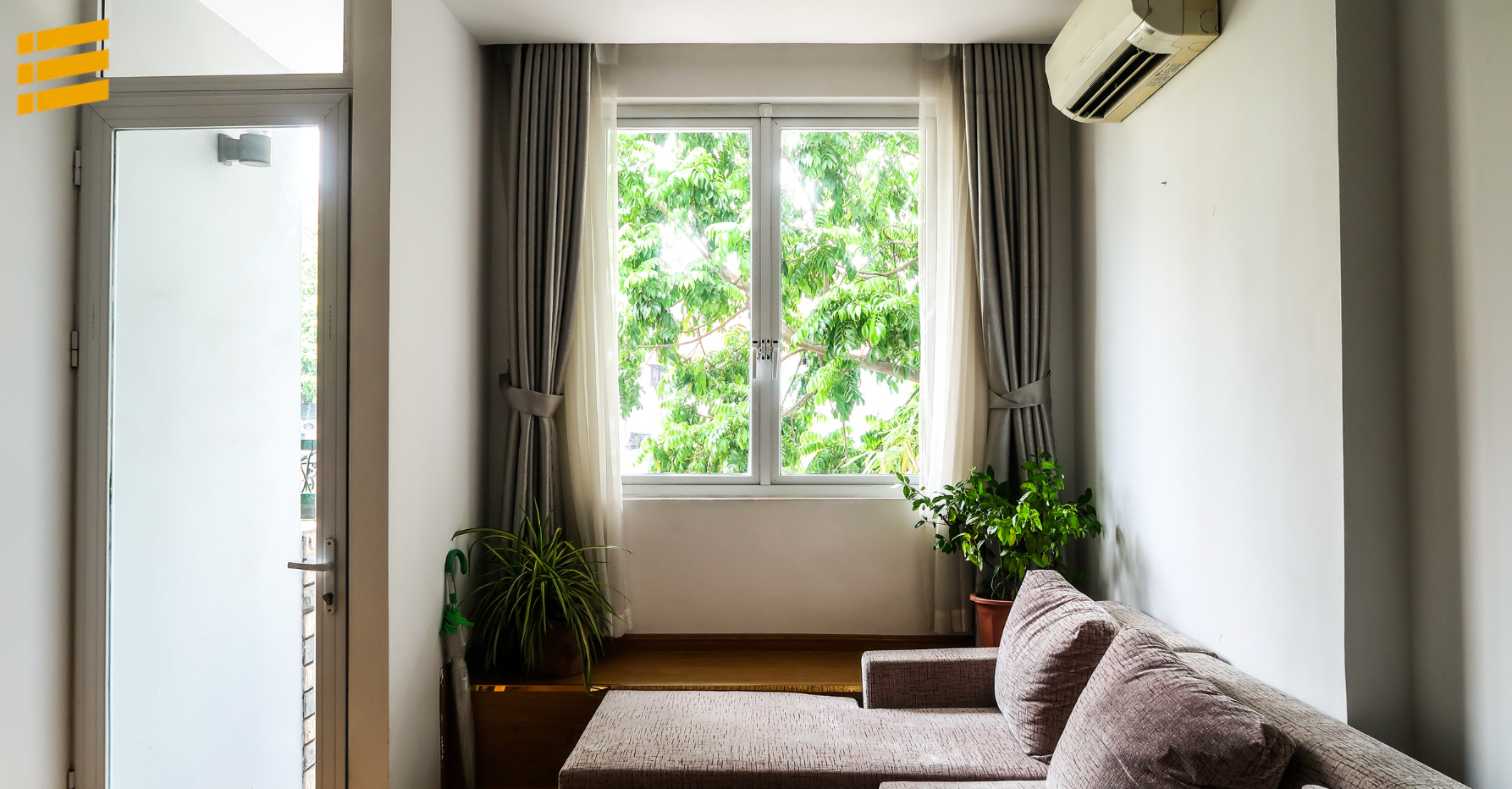
Whether you are new to buying window treatments or not, all of the options and decisions to be made can be overwhelming. One of the first decisions you’ll need to make is whether your window covering needs to be an inside mount or an outside mount. What’s the difference, and which is right for your window and needs? Keep reading to find out! What is an Outside Mount for Window Treatments? Most people who have hung their own blinds are probably familiar with this method of mounting a window treatment. An outside mount is when you hang your window covering above the window frame (opening) on the wall or trim. With this application, the window treatment is slightly wider than your window. What is an Inside Mount for Window Treatments? An inside mount is when the window covering is hung inside the window opening, or frame. The window treatment brackets are either screwed into the top of the window frame, or on either side of the opening. Because the window treatment is the same width of your window opening, this provides a clean, finished look and doesn’t cover decorative moulding. When and Why Should I Choose an Inside Mount? We almost always recommend an inside mount. However, your window frame will need to have enough depth to hang your window treatment. Most inside mounts require a few inches of window depth to anchor the brackets on. It’s important to check the specs on your selected window treatment before purchasing to see what these depth requirements are. By hanging your window treatment this way, your treatment will stay out of the way, safe from getting knocked around by kids or pets running past, or the errant elbow. We’ve all had an accident with a bent blind slat, and while they can be replaced, it’s a task that can take a little bit of time. When and Why Should I Choose an Outside Mount? We recommend an outside mount for your window treatment when the window frame is too shallow to accommodate an inside mount, or when there are obstructions, like a window crank, security sensor, or other object that prevents your treatment from lowering all the way. Having decorative trim or tiling on the inside of the window frame could get damaged by an inside mount, also making outside mount the more ideal option. Other benefits that an outside mount provides is less gaps that cause light leaks when your window covering is fully closed. This can be ideal for nurseries, bedrooms, or media rooms as it provides better room darkening. An outside mount can also camouflage odd-shaped or off-center windows. You can also hang the window treatment further above the window to give the illusion of taller windows. Best of Both Worlds for Layering! Some home owners love to layer their window treatments. If you have enough depth, doing an inside mounted roller shade with an outside mounted roman shade can provide a luxe look or offer additional room darkening or blackout capabilities. Call the Experts in to Measure Your Windows Getting the right measurements for your window is the most important step. Let our experts help you get the perfect measurements, plus help you select the right window covering for your needs and budget! Schedule your free in-home consultation and quote today and we’ll bring the showroom to you!
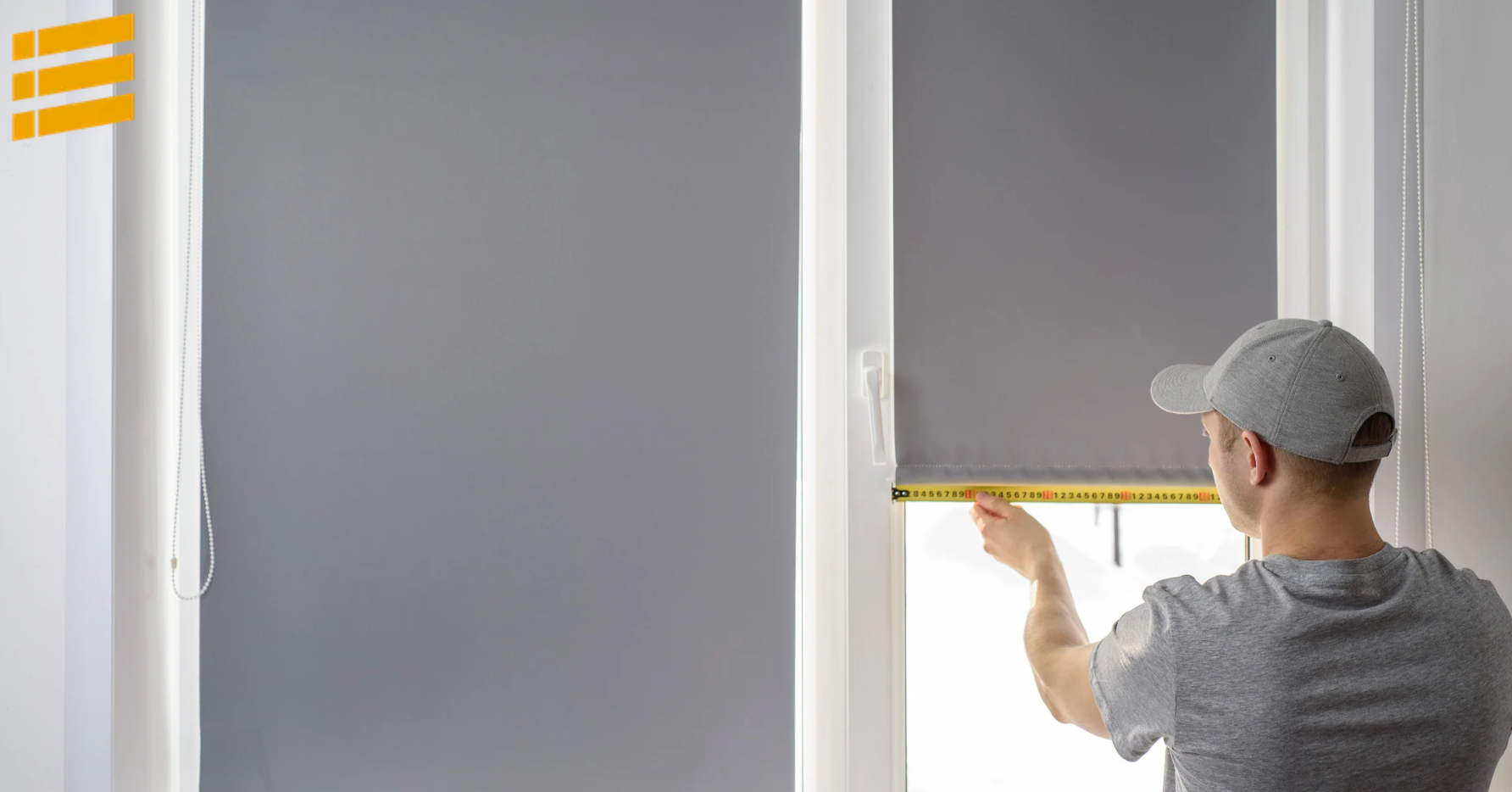
Blinds are the most popular window treatment thanks to their clean design and full light filtering capabilities. But we know that sometimes homeowners are looking for something a little different to make their house a home. Here are some of our other favorite window covering options that you should consider. Interior Shutters If you still want full light filtering capabilities but want something a little more upscale, interior shutters might be right for you. The slatted design provides the same functionality as blinds, but is mounted directly to your window frame. There are plenty of different options and customizations to choose from, giving you endless design opportunities. Their charm and curb appeal makes these window treatments very desirable, and home buyers are willing to pay more for them! So while interior shutters are the most expensive option, they are the only window treatment that actually adds value to your home, making them a great long-term investment in your home. Vertical Panels Another option for a slatted window treatment is vertical panels. These statement-making window coverings are an upscale version of vertical blinds. The wide panels slide back and forth on their casing and are a good option for large or oversized windows and modern tastes. Roman Shades If you want classic design and a softer window treatment, roman shades never go out of style! But these window coverings aren’t just for traditional style homes. Roman shades come in different pleat styles, from soft and voluminous, to a more structured pleat that is perfect for modern home designs. The near endless choices of fabric, colors, and patterns means there is something for everyone, whether you want soft and neutral, or bold and vibrant! Cellular Shades If you are looking for energy savings, look no further than cellular shades. Also known as honeycomb shades because of their pocketed design, cellular shades offer the most insulation and energy savings of any window covering. But don’t worry, these aren’t the same cellular shades your grandmother had. These more modern window treatments provide a sleek option in endless color options and multiple layers of pockets. Natural Shades Looking to bring a touch of the beauty of nature into your home? Natural shades are made of materials such as bamboo, rattan, or reed. They roll up into a neat little stack when open but when drawn, provide warmth and texture to your home. With a variety of materials, colors, and textures, nothing brings style and beauty into your home quite like natural shades! Get Advice from the Window Treatment Experts Still not sure which window treatment is right for your budget and needs? Elevated Views’ design experts can help you select the right options for your style and budget. As a family-owned business, we believe that making the process of choosing your next window covering should be fun and simple–yes, fun! Schedule your free in-home consultation and quote and our experts will bring the showroom to you!
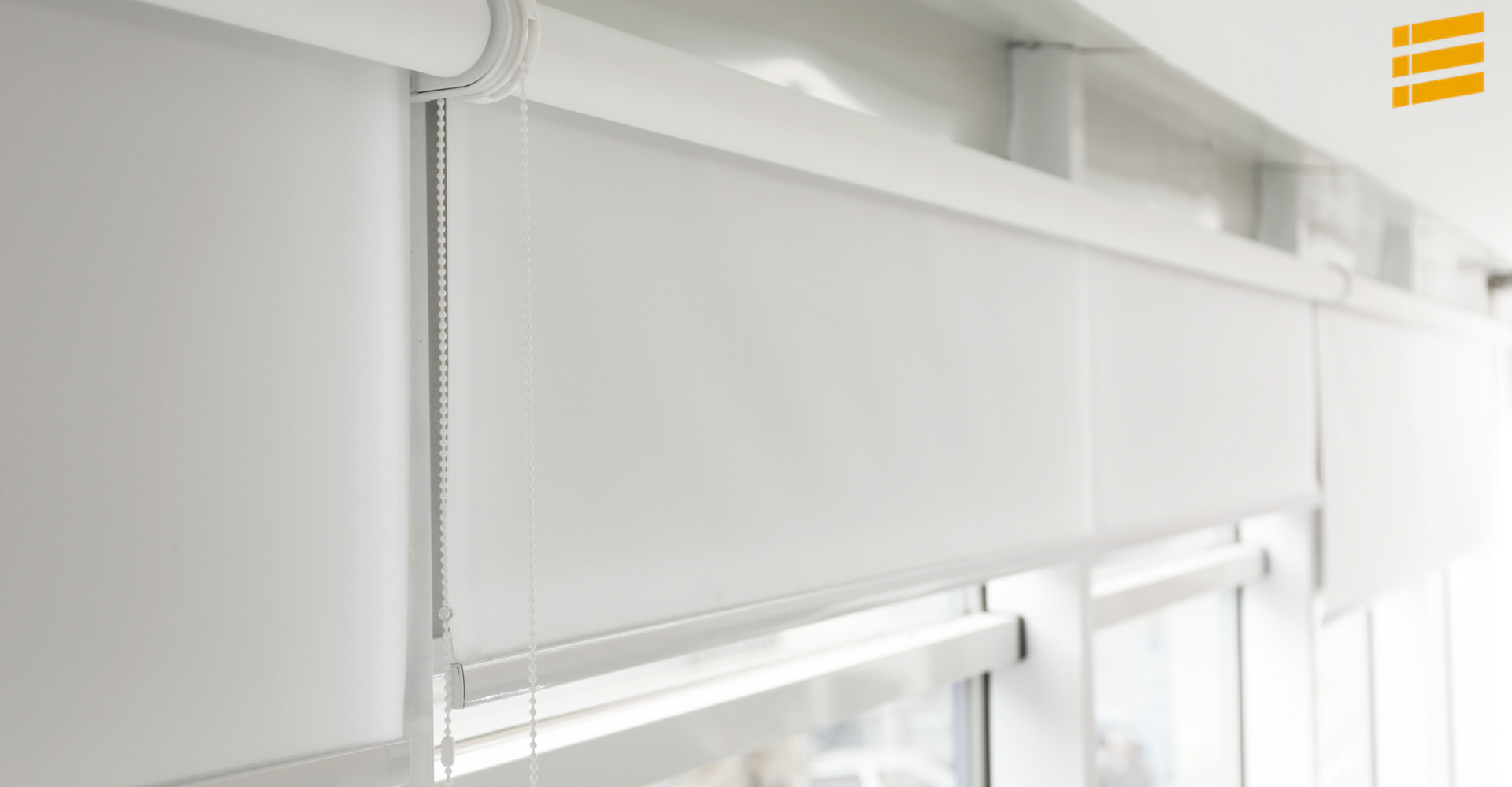
Window treatments aren’t just about making a statement on your walls or providing shade when the sun peeks in just a little too strongly. Window coverings are also about providing you with privacy in your home! In this article, we take a look at our top three window coverings that provide the best privacy, plus one window treatment you should never opt for if privacy is your main goal. Most Popular: Blinds Blinds are perhaps the most popular window covering out there and for good reason. They are affordable and offer full light filtering and privacy control. When you want an unobstructed view, simply open them fully to create a neat little stack at the top. For light filtering, keep your blinds pulled down but the slats tilted open. For complete privacy, tilt your slats closed. For the best privacy with blinds, we recommend getting custom blinds. These will be cut to fit your exact window measurements, ensuring minimal gaps. Not only does this increase privacy, but it improves insulation as well. Blinds come in a variety of options, from real wood to faux wood, various slat widths, and from white to black and everything in between. You can even color match the wood stain to existing wood in your home. We also recommend that you opt for faux wood blinds in rooms with higher humidity levels (e.g. kitchens and bathrooms) as humidity can warp and discolor real wood blinds. Best Investment: Interior Shutters Interior shutters are considered the most desirable of all window coverings. So much so, that home buyers are willing to pay more for homes that have them. This makes interior shutters the only window covering that actually adds value to your home, making them a great investment! Like blinds, the slatted design gives you full light filtering and privacy control. But unlike blinds, you can opt for split control, allowing you to independently operate the top and bottom half of the slats. This means you can leave the top slats open for light while closing the bottom for privacy. And because shutters are mounted to your window frame, the gaps are nearly non-existent, providing improved privacy and insulation. Interior shutters also come in a variety of colors and stains, slat widths, and materials (wood and faux wood). Again, we recommend opting for faux wood in higher humidity rooms like kitchens and bathrooms, as real wood can warp and discolor from humidity. Best Soft Treatment: Shades If you would rather have a soft treatment, there are a variety of shades you can choose from to fit your style. From classic roman shades to roller shades, there is something for everyone. To improve your privacy, add a lining to your fabric shade, such as room darkening or blackout. This lining increases privacy and insulation, and can make bedrooms and nurseries perfect for a nap or a good night’s rest. Options are basically limitless with style, material, pattern, and color, making fabric shades a favorite of interior designers and homeowners alike. The One Window Treatment that Doesn’t Provide Privacy While most window coverings provide some level of privacy, there is one window treatment that does not provide privacy at night. Solar shades are a great option for sunny windows in rooms that do not require privacy, such as living rooms or dining rooms. When pulled down during the day, those outside your home cannot see in. However, at night when you have your lights on, those outside your home are able to see through the solar shade, providing almost no privacy. We do not recommend solar shades for rooms that require privacy, like the bathroom or bedroom. But for sunny living rooms, solar shades are a win thanks to their ability to block harmful sun rays that keep your home’s temperature more stable while giving you a great view through the fabric from inside your home! Elevate Your Privacy Today! Are you ready to increase your home’s privacy with new window treatments? Elevated Views understands that the right window covering can make all the difference! Our experts can help you select the right window covering for your style, budget, and needs. Schedule your free in-home consultation and quote and we’ll bring the showroom to you!
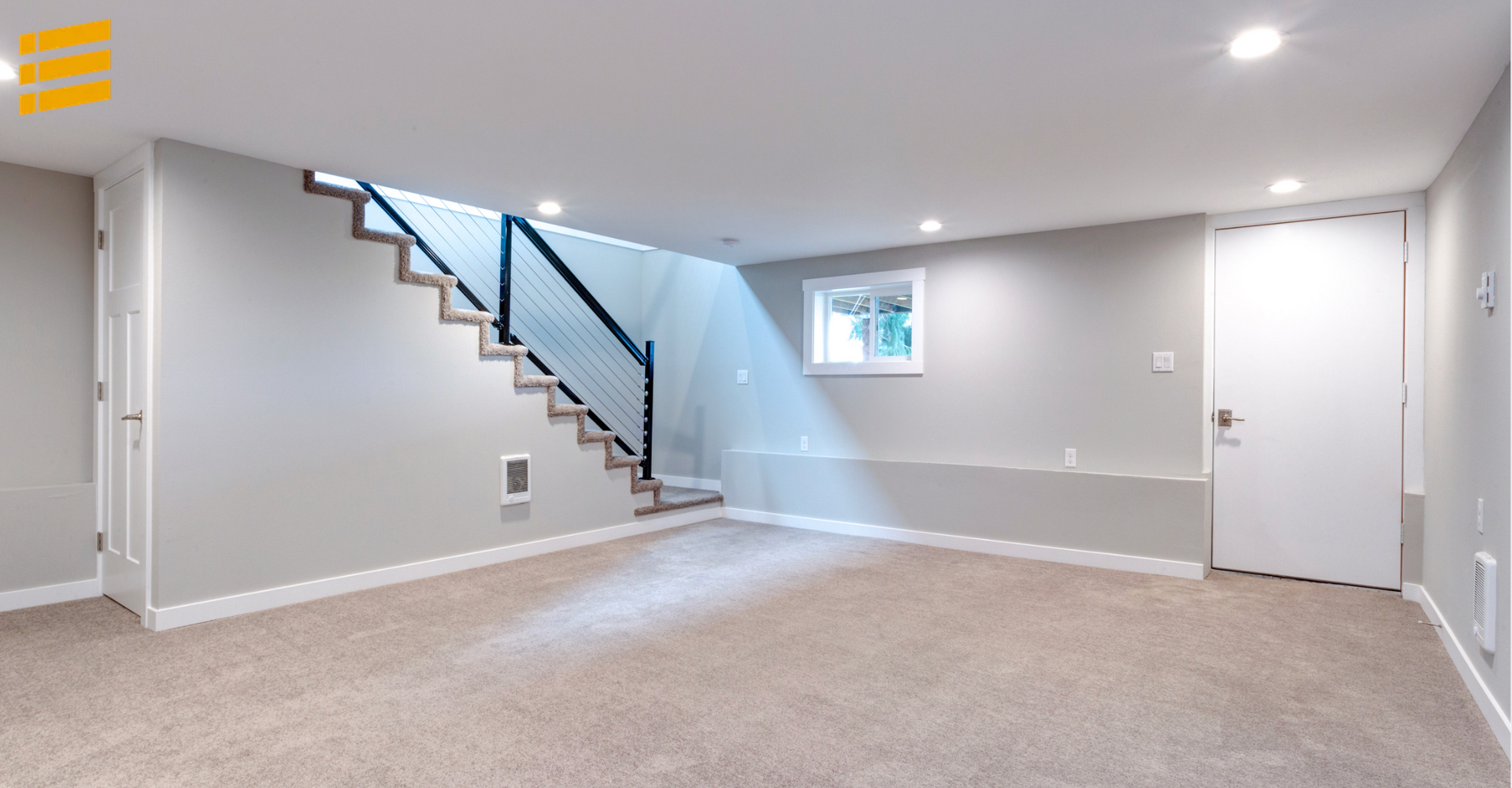
Basements are great but they don’t always have the best natural lighting situation. If you have a dark and gloomy basement despite having windows, there is no need to skip out on having chic and stylish window coverings. In this article, we share our favorite window treatments that help create a light and airy or bright and fun feel in your basement! What to Avoid Whether you are looking for a lighter feel or a more colorful feel, there are a few things to avoid when selecting window treatments for a basement. The first is to avoid dark colors. Black shutters, forest green shades, or dark cherry wood blinds can make basement windows feel even darker. The other thing you want to avoid is heavy fabrics. Fabrics with a lot of heft, such as velvet, can add weight to your basement windows and block more light, making your basement even darker. Now that you know what to avoid, let’s look at three of our favorite options for creating a brighter or lighter feel in your basement. Light-Toned Blinds and Shutters Blinds and interior shutters are a popular option because of their full light filtering control. If your guest room is in the basement, your guests will thank you for the ability to close their blinds or shutters at night for more restful sleep or privacy. We recommend opting for lighter stains and colors for your real or faux wood blinds and shutters. Lighter colors absorb less natural light and instead act as a bounce, helping to create a warm, soft, and inviting glow to your basement rooms. Light-Toned Fabric Shades Fabric shades come in a variety of styles, from traditional roman shades to more modern roll up shades. Lighter fabric materials and colors will help create a light and airy feel to your basement rooms. We recommend light, neutral-toned linen fabrics and pastel-hued fabrics to create a light and airy feel in your home. You can opt for a solid fabric or try a tone-on-tone pattern for a chic and subtle look. For additional privacy in basement bedrooms and bathrooms, add a lining to the back of your fabric shade. Bright and Colorful Fabric Shades If you aren’t into the light and airy vibes, we recommend opting for bright and colorful tones and bold patterns. Remember to avoid heavy fabrics to keep these bolder colors and patterns from becoming too heavy. With bright and colorful fabrics, you can liven up any gloomy and dull basement room! Try a fun chartreuse green or a bright teal as a pop of color! For bedrooms and bathrooms, we recommend adding a lining to the back of your fabric shade for additional privacy. Elevate Your Basement with Chic Window Coverings! If you are looking to take your basement from drab to fab, Elevated Views is here to help! Our design experts can help you select the right window treatment for your basement windows and budget. Then your installation experts will ensure your window covering is hung right the first time. We make the entire process of choosing your new window treatment fun and simple. Schedule your free in-home consultation and quote and we’ll bring the showroom to you!
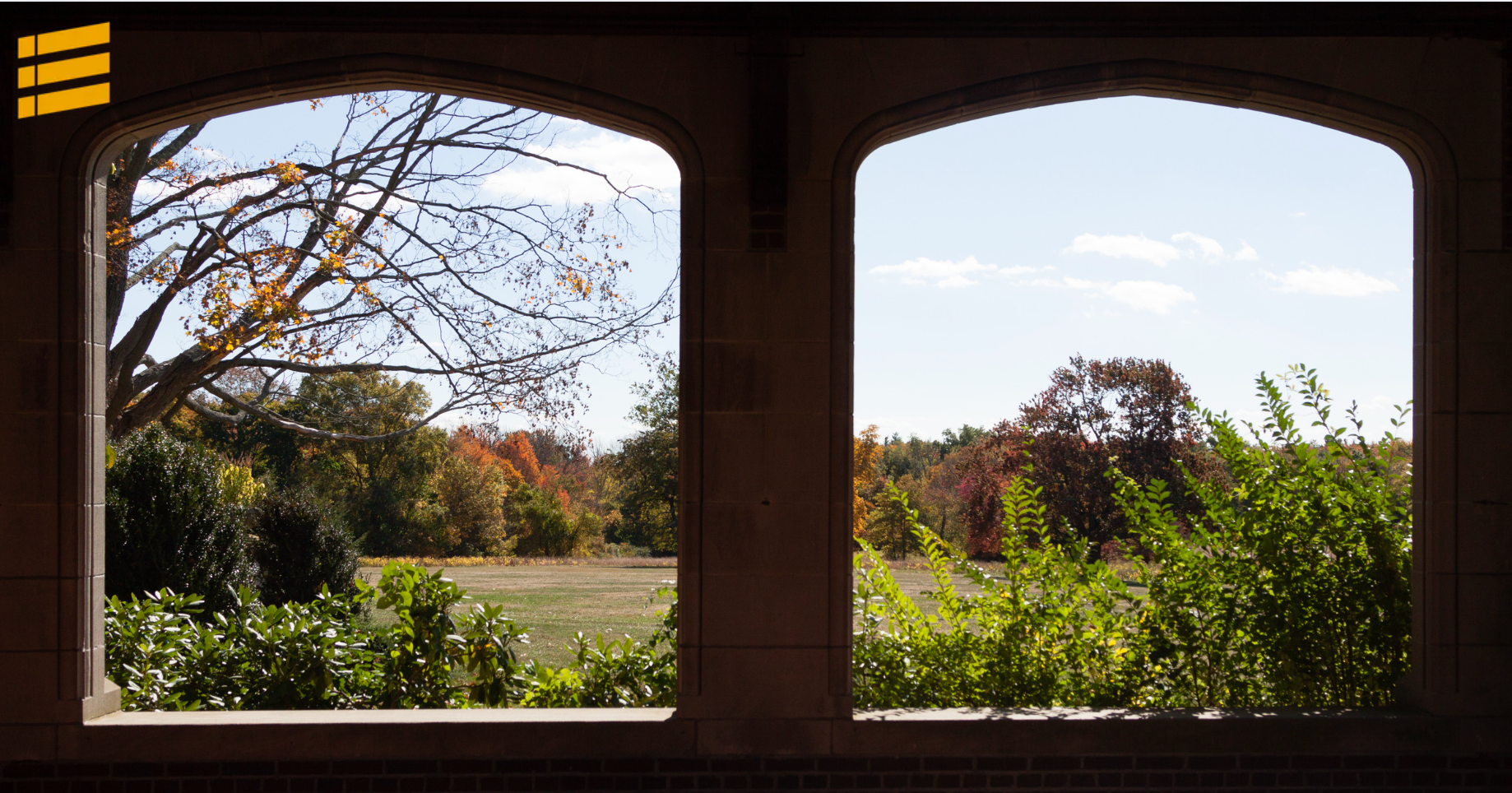
Let’s face it–we all love the architectural interest that arched windows bring to our homes, but they are a bit of a conundrum for homeowners. You don’t have to cover them, but what if you want more privacy or need to filter or block sunlight? It’s no fun having a great living room with lots of natural light but then getting frustrated when the sun hits your arched window at 4 pm and you can’t see your TV anymore. We get it! But don’t worry, there are plenty of stylish window covering options specifically for your arched windows, even for those that are imperfect or are considered a palladian arch! Why Custom is Best Because arches are a special shape and every window, regardless of whether it’s an arch or not, is a bit different, custom is the best option for dressing your windows! Custom window coverings give exceptional coverage, providing you with more light filtering, room darkening, and privacy. Custom window treatments are also made from higher quality materials, so your custom window coverings will stand the test of time. So while you may pay more up front for custom, in the long run, you’ll be glad you didn’t go with a big-box store option like your neighbor, who’s already having to replace their cheap window covering! Custom Window Coverings for Arches Let’s dive into our top two favorite options for covering an arched window. Each of these options allows you to have a separate covering for your arch, perfect for story or transom arches (these have a bit of wall between the arch and the lower window or door), or you can opt for an all-in-one covering for arches on single windows with a curved arch at the top. Cellular Arch Cellular arches are a beautiful way to cover your arched windows. The pleated fabric offers a stylish feel and creates soft, filtered light in your home. The pocketed design of cellular shades also offers insulating properties, making them perfect for drafty and sunny windows alike! Interior Shutter Arch Made of real wood or composite, these bold and striking window coverings give you a sunburst-style arch and slatted design that makes them perfect for pairing with your interior shutters or blinds! If your arch isn’t considered a story or transom, you can get an all-in-one custom shaped arched shutter. Bonus: Interior shutters are the only window treatment that add value to your home, making them a great investment! Elevate Your Arched Windows! If you are ready to cover your arched windows with a chic and stylish window treatment, Elevated Views has you covered! We’ve seen windows of every shape and size and can help you find the perfect solution for your lifestyle, budget, and style! Schedule your free in-home consultation and quote today and we’ll bring the showroom to you!

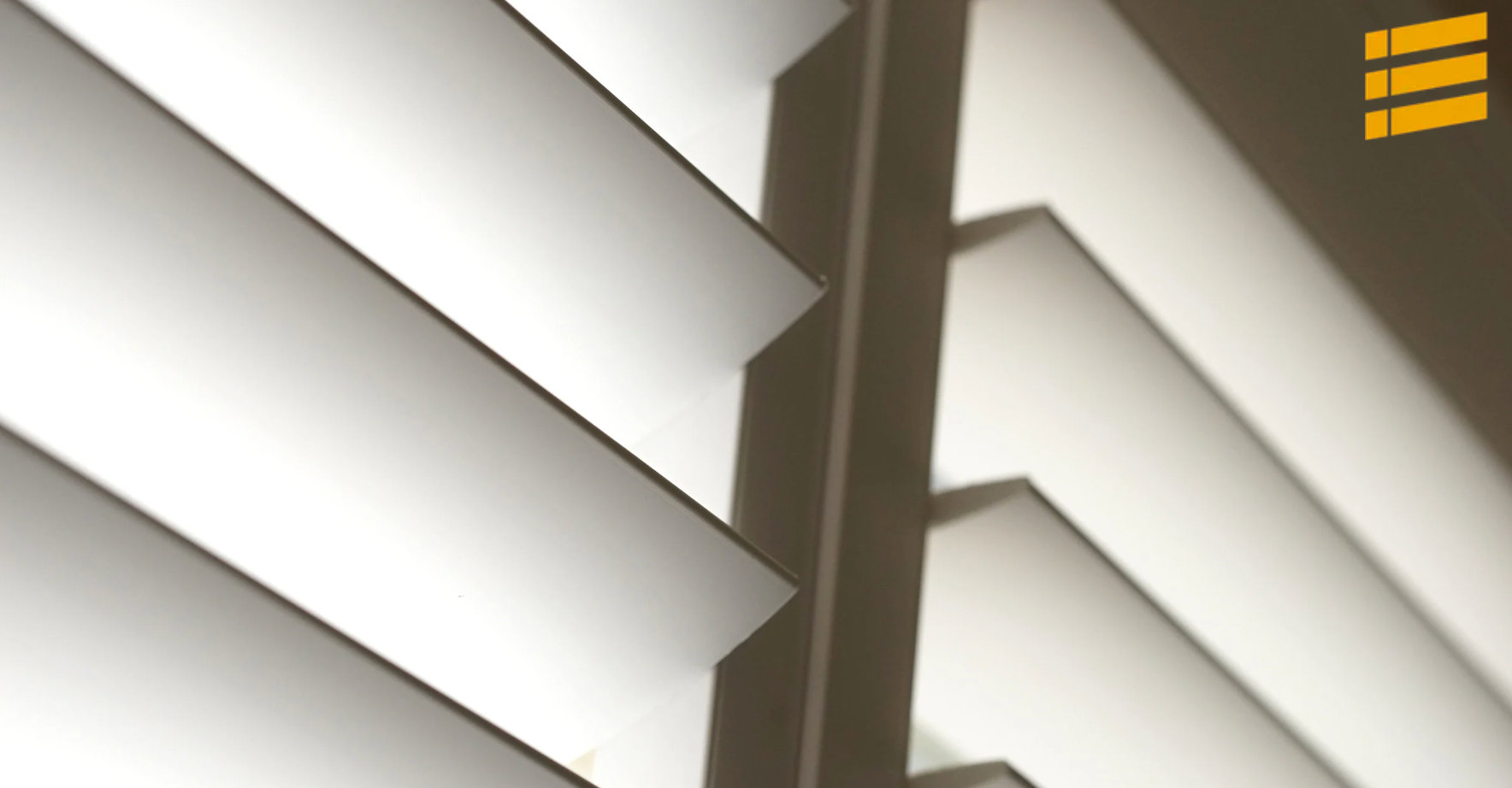
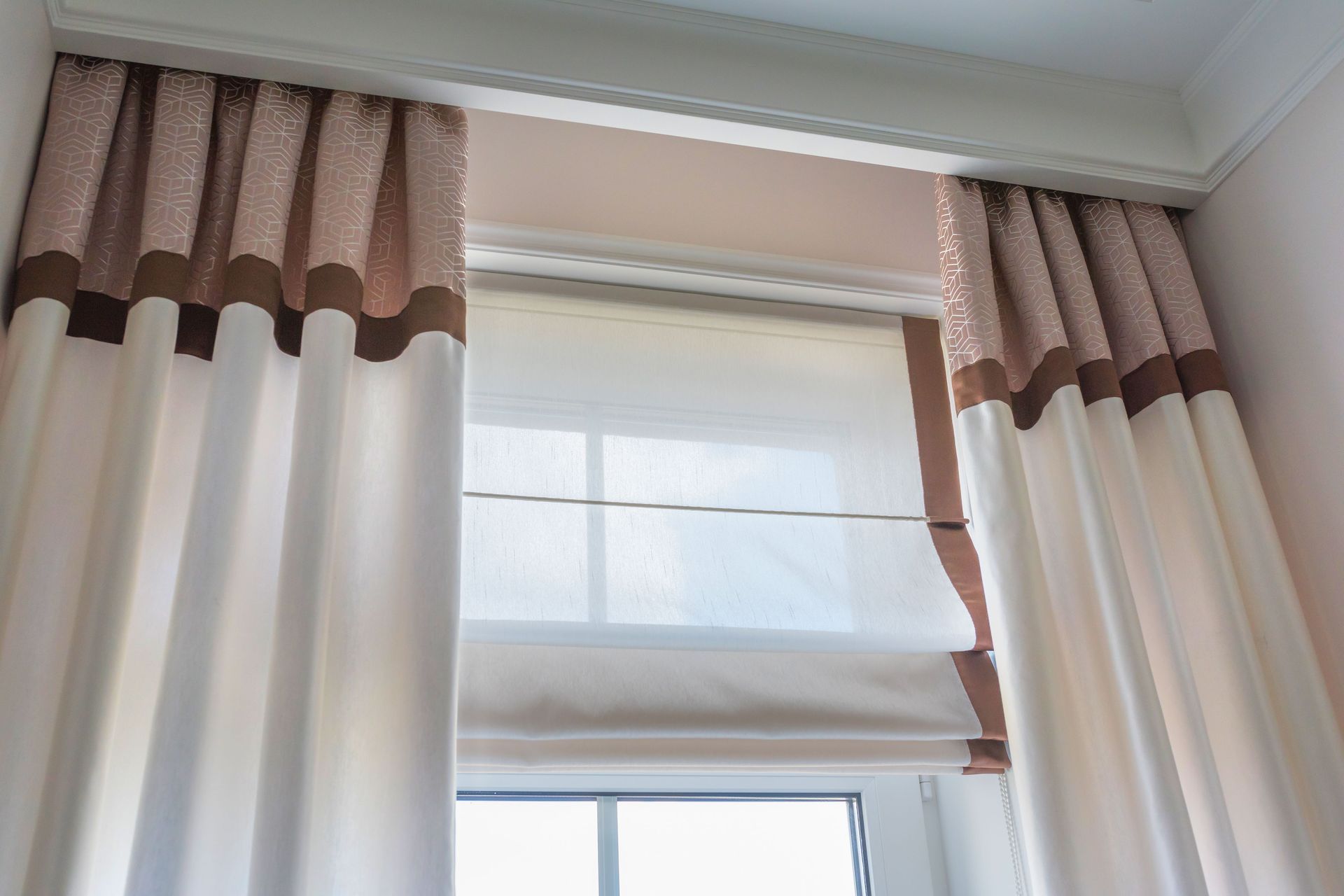
Share On: